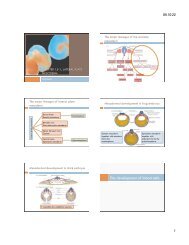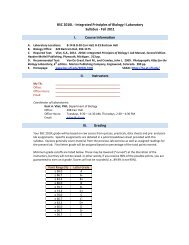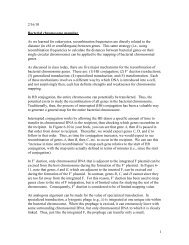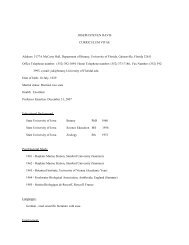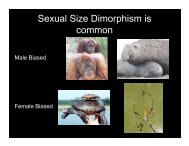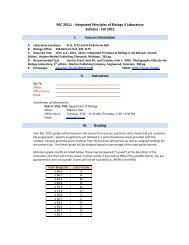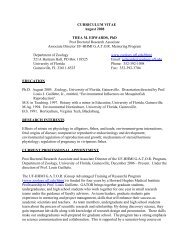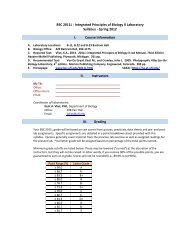parapodia between the short, anterior, thoracic region and the long, posterior anterior region: note that the distinctneuropodia and notopodia are inverted at this junction. At the same junction the fecal groove (that transports fecesfrom the posterior anus to the anterior opening of the tube) switches around from a mid-ventral to a mid-dorsaltrack. How do you think this condition came about?Fig. 7. Sabellid brachiolar crown (left) and close-up of single brachiole showing morphology and particle transport(right) (from Brusca X2 Invertebrates).Family SerpulidaeSerpulids resemble sabellids in their well developed feeding fan, and suspension feed in a similar manner; howeverthey have a calcareous, rather than parchment tube. Many serpulids have a specialized operculum that closes theirtubes once they withdraw. The feeding fans of serpulids can be quite elaborate – see photos of “Christmas treeworms”, which live symbiotically in reef corals, and have a double stack of tree-like fans.Family SabellariidaeSabellariids are tube-dwelling polychaetes that construct their homes by gluing together sediment grains, andsuspension feed with ciliated tentacles. Sabellariids solved their sanitation problem quite differently from sabellids:the posterior end of their body is reduced to a thin, tail-like tube, which can be extended out of the tube opening, sortof like a perverted snorkel, for defecation. The larvae of at least some sabellariids are chemically attracted to andpreferentially settle on conspecifics; as a result these worms often live in large aggregations. Large reefs built by thesabellariid Phragmatopoma are common in some locations, including the southeast coast of Florida.Family Siboglinidae (former phylum Pogonophora) – picklesThe “Phylum Pogonophora” has a long and twisted history. Discovered over a hundred years ago, these gutless,thin, elongate worms were thought at various times to be deuterostomes or protostomes. Recent work places themfirmly within polychaetes; their unusual morphology is the result of rapid evolutionary change associated with theacquisition of a novel life-style: chemosymbiosis. All pogonophorans have chemoautotrophic bacteria living in alarge “trophosome” a mid-body tissue mass derived from the gut, but lacking a lumen. The animal provides thebacteria with H 2 S, which the bacteria use as a chemical energy source for fixing organic compounds, which theworm then uses. Siboglinids have one to many tentacles that extend from a large parchment tube. At the posteriorend of the body they have a small segmented portion, the opisthosoma, that hints at their polychaete origins.
Fig. 8. Schematic diagram of a pogonophoran (from Brusca X2 Invertebrates).Echiura (several families; formerly a phylum)Echiurans are unsegmented, coelomate worms, with a fairly simple morphology. They are largely infaunal in softsediments (extending to the deepest ocean depths, where they can be common), although several species nestle increvices. Recent evidence suggests that echiurans are highly derived polychaetes that have lost segmentation, butwhich retain a couple of chaetae in most species. They are selective deposit feeders that use their proboscis togather surface sediments. In some echiurans (family Echiuridae) the proboscis is chunky and short and both sexesare large. In the Bonellidae the proboscis is spaghetti-like, with a T-shaped end, and extends to many times thelength of the body. Bonellids have dwarf, degenerate males, which are not much more than bags of testes, and livewithin the female nephridium-gonoduct complex. Sex determination in bonellids is environmental: larvae that settleon females become males; those settling freely develop into females. Study the worms provided, noting theproboscis and body; find the chaetae in echiurids.Fig. 9. Three genera of echiurans: A. Echiurus, B. Listriolobus, C. Bonellia (left), echiuran anatomy (right) (fromBrusca X2 Invertebrates).CLITELLATA – OligochaetesOligochaetes are characterized by segments that have but two small clumps of chaetae and lack parapodia; they alsolack the various head appendages found in most polychaetes. They differ substantially in their reproductive biology





